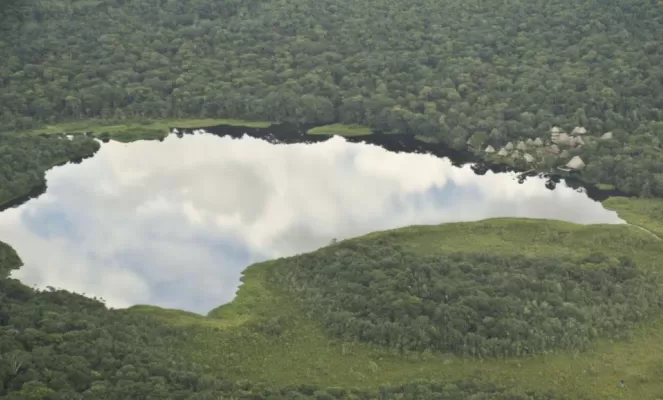As is the case of many of the Kichwa communities, Anangu has strived with much difficulty to keep their ageless traditions intact, perhaps a near impossible task in this modern day. Anangu remains very proud of their culture and aware of the need to preserve the natural resources of their territory.
Today, at the Yasuni Kichwa Ecolodge, stay at the community itself, visit the many different local endeavors that seek to keep authentic age-old customs alive and spend quality time with the privileged keepers of the Yasuni National Park.
Customs & Lifestyles
The Kichwa community has lived in the tropical rainforest for ages, learning to survive where traditional means of agriculture are unsuccessful, in a full-fledged jungle where nature is so overpowering that man is truly just a tiny speck within its complexities. These aspects play an extraordinary role in the lifestyles and customs of the Amazonian Kichwa, who keep a deep respect for their environment. At Yasuní Kichwa Ecolodge you will have the opportunity of experiencing how a culture can thrive in what some have considered deeply inhospitable to man, coexisting with the animals and plants of an extreme biodiversity center. You will get to meet people of a different mindset, learn about their views on friendship, marriage and religion, their arts and crafts, interact with shaman and community leaders, begin to understand the roles and dynamics between genders and generations, and explore unique outlooks on religion and spirituality.
History
Two native cultures inhabit Yasuní National Park, the Huaorani, a tribe that only recently was contacted by Western civilization, and the Kichwa, who are also found in other areas of the Ecuadorian Amazon Basin, and live and administer the 21,465 hectares (ca. 53,000 acres) of the Añangu lake property. The Kichwa are spread throughout Ecuador, and Amazonian Kichwa have settled along the Pastaza, Aguarico, Curaray and Napo rivers (among others). Their defining factor is their language. Either through the need for communication with Andean communities or imposed by missionaries, the Kichwa language spread throughout Amazonia. Today, people who speak Kichwa have organized themselves into communities that share a common territory, with several families owning a piece of land within communal lands. One of these such lands is Añangu, on the banks of the Napo River, inside Yasuní National Park.


















